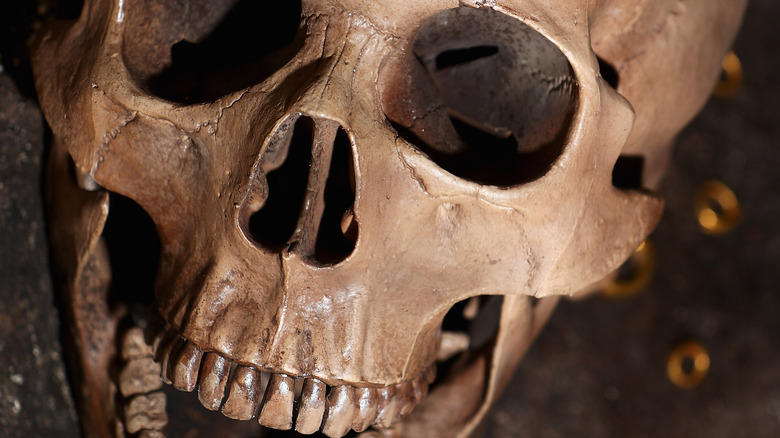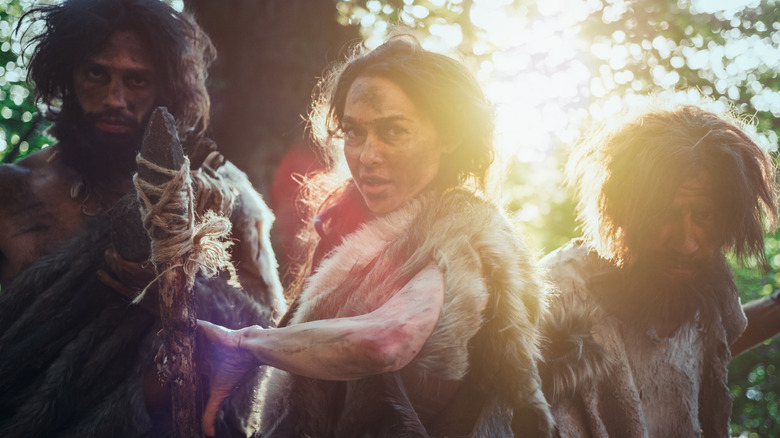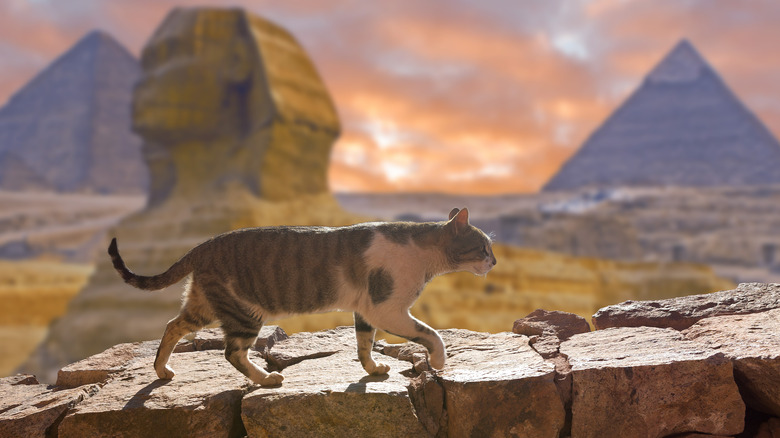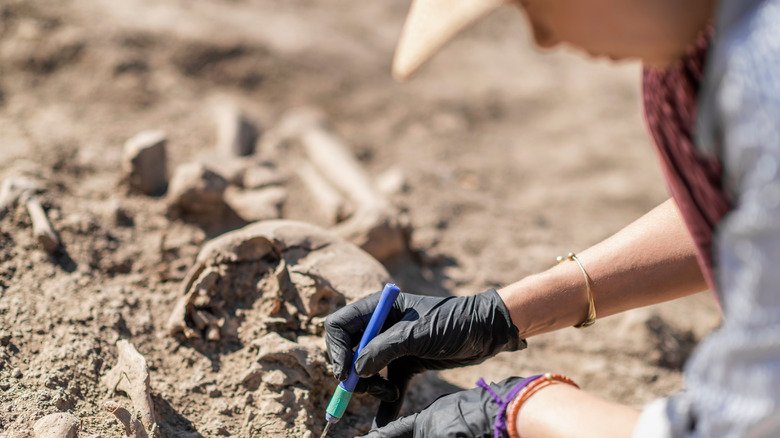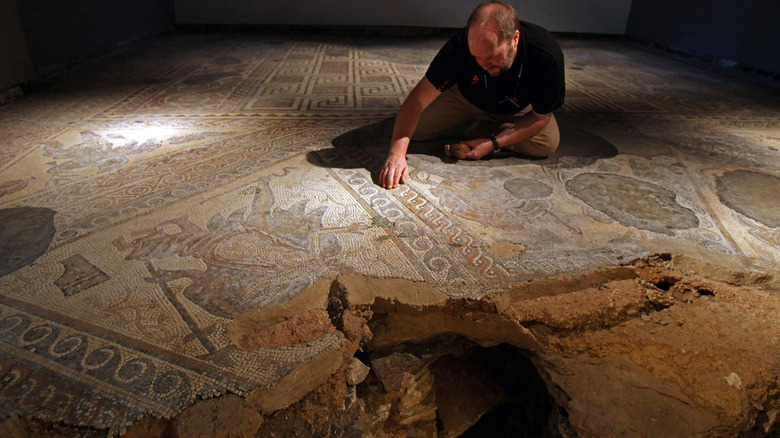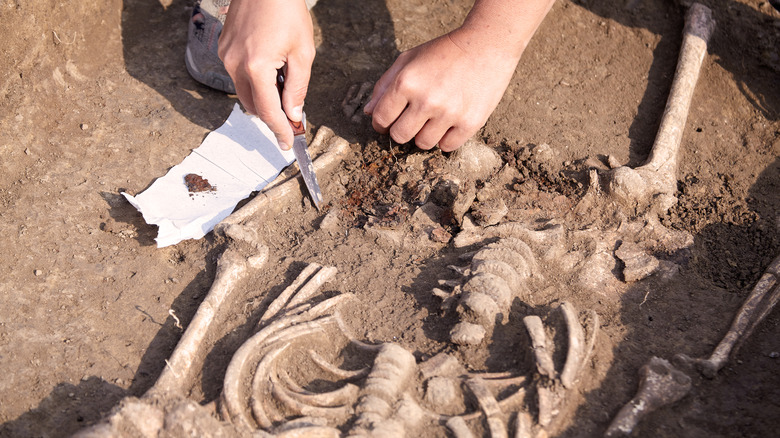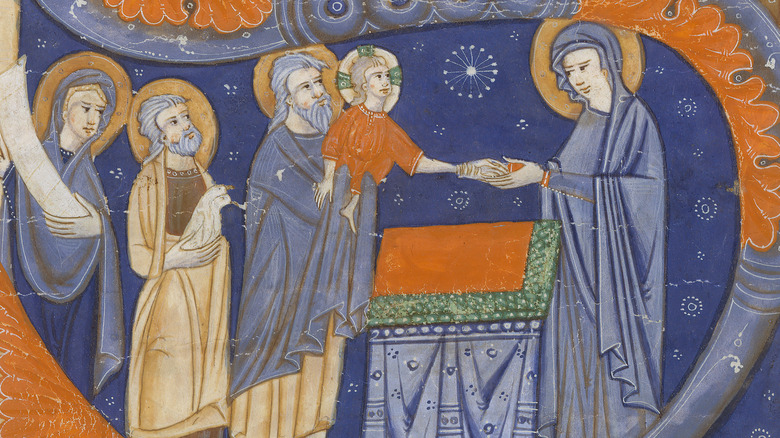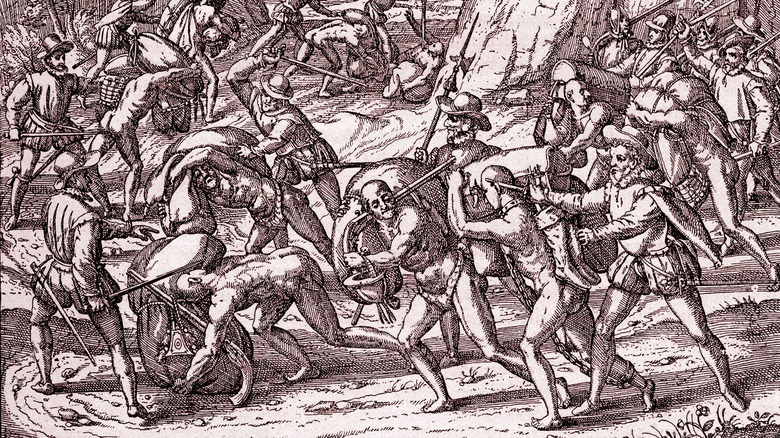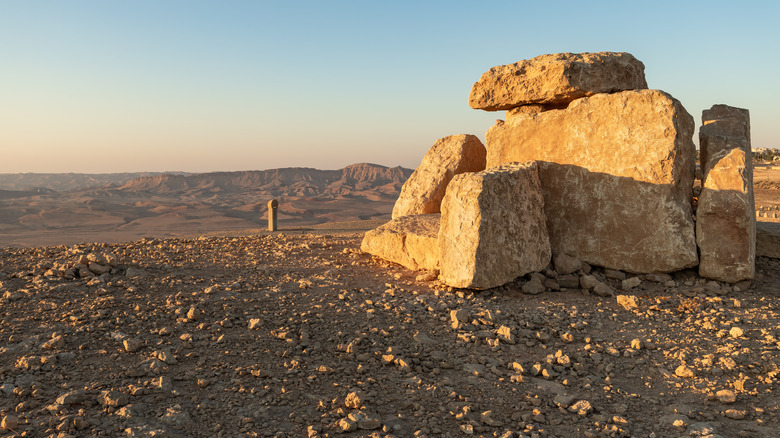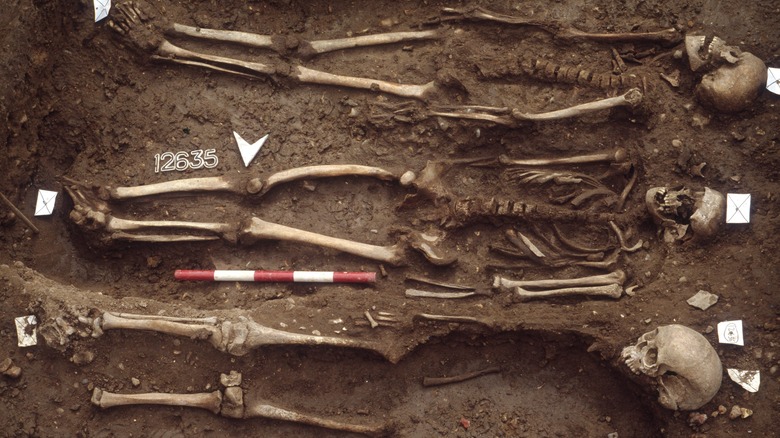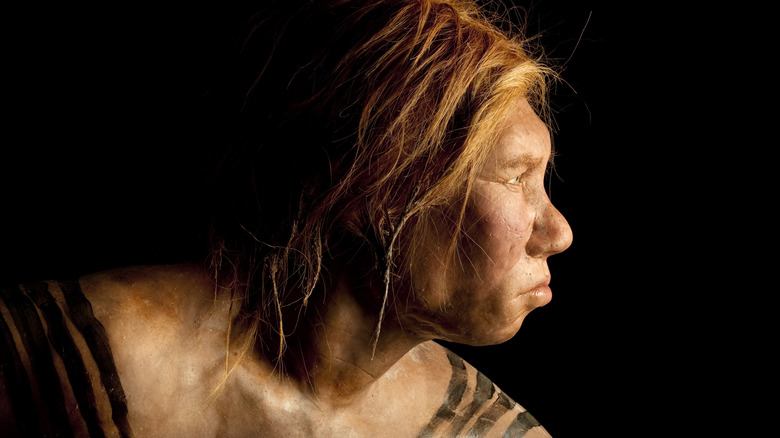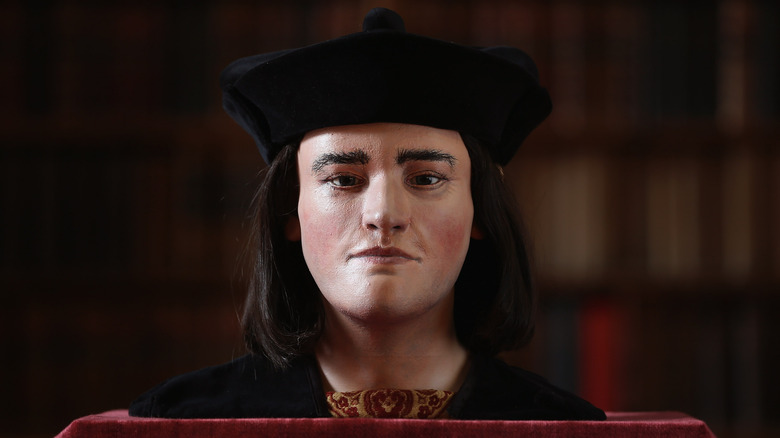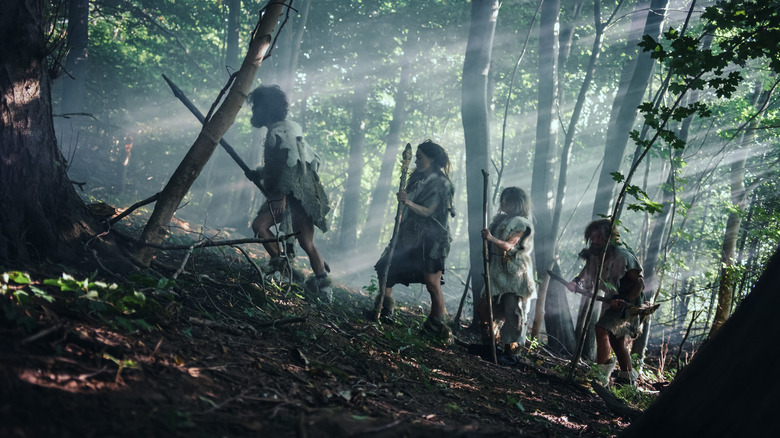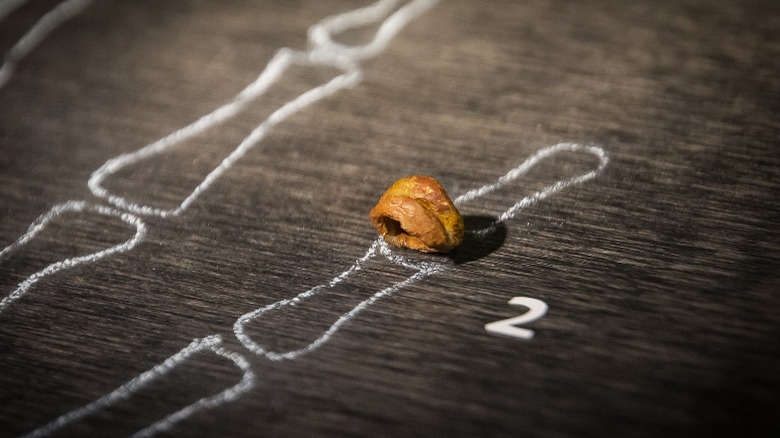Recent Archaeological Finds That Changed History
Read a few history books, and it'll quickly become clear that they tend to present humankind's past as the sort of thing we definitely know all about. They read as if we know exactly what happened, when, why, who was involved, and what the consequences were, but the world is much messier than what can fit into a book that's just a few hundred pages long.
And it's much more complicated, too. Sometimes, all that archeologists and historians are able to do is take the evidence that's left behind — sometimes, artifacts that have been sitting around for hundreds, if not thousands of years — and piece them together to make a sort of educated guess. Sometimes, they're right. And sometimes, they're really, really wrong.
Every so often, someone will discover something that changes everything about the way we look at or think of our ancestors. History gets rewritten, dates get changed, places get moved, and we're reminded again just how little we truly, concretely know about our collective past. It's happened recently, with some fascinating discoveries that have changed some major historical beliefs into major historical misconceptions.
The remains of a female hunter
The idea of "traditional" gender roles go back much farther than the 1950s, and according to National Geographic, it goes all the way back to prehistoric hunter-gatherer societies. The long-held belief was that while the men were out hunting, the women were doing things like gathering nuts and berries. While not everyone was on board with the idea of labor being divided along gender lines, that was the most widely accepted story — and according to the University of California, it's an idea that's translated into modern-day beliefs about gender-based divisions of labor. It turns out that not only is it a horrible way to think, but it's completely wrong.
In 2018, archaeologists excavated a burial site in what's now Peru. They assumed the remains belonged to a man, because buried alongside the person some 9,000 years ago were an array of items that included a hunter's projectile points, and tools for the preparation of hides. In 2020, archaeologists published their findings that it wasn't a man at all: It was a woman.
The discovery had prompted the team to go back and take another look at scores of hunter burials that had always been just assumed to be male. The review led them to the conclusion that between 30 and 50% of the hunters in the hunter-gatherer societies of our ancient past were female, and that all means we should probably take a good, long look at the idea of "women's work."
The world's oldest pet cemetery
Think of the relationship between ancient Egyptians and their animals, and two things will come to mind: The worship of cats, and the mummification of cats. According to LiveScience, many scholars have long believed that for much of human history, any animals kept around — or preserved after death — were for utilitarian or religious purposes. But findings published in 2021 dispute that in a pretty big way.
In a project led by zooarchaeologist Marta Osypinska from the Polish Academy of Sciences in Warsaw, archaeologists discovered what's the oldest pet cemetery to date. Located outside of Berenice in Egypt, the site dates back to the first and second centuries AD, and contained hundreds of monkeys, cats, dogs, and even a fox and a falcon who had been carefully buried: Many were wrapped in blankets, wearing the carefully crafted, beaded collars they had in life, and some were also buried with other trinkets.
It might be easy for skeptics to suggest that this was simply a dumping ground for animals kept around for pest control and other utilitarian reasons, but Osypinska says that's not the case. Many of the skeletons showed signs of advanced age, to the point where they would have required special care to make it through the day. Other skeletons showed deformities, and Osypinska says the implication is clear: "Someone fed and kept such a 'useless' cat. ... our discovery shows that we humans have a deep need for the companionship of animals."
Dragon Man
Let's take a look at the recent evaluation of a massive fossil skull. According to New Scientist, the skull was originally found in the 1930s, then just sort of buried somewhere else. The finder only revealed the skull's new resting place when he was dying, and that all meant that it wasn't seriously analyzed until 2018. As of their 2021 reporting, it's still up in the air what the deal is, but either possibility is pretty darn cool. In a nutshell, the skull has been dated to between 146,000 and 296,000 years ago, and it's basically a sort of very, very large Homo sapiens face. That said experts from the Natural History Museum in London agree that it's not the skull of a modern human, but it's not a Neanderthal skull, either. So, what the heck is it?
Some think it's the intact skull of a member of a group of extinct humans called the Denisovans. There's not too much that's known about them — aside from the fact that they existed — and if it is, it's the first we've seen. Neat, right?
Not everyone agrees, and some think the discovery will completely rewrite humans' family tree. Xijun Ni, a professor from the Chinese Academy of Sciences, describes the find (via the BBC) as "our long-lost sister lineage." The idea is that somewhere in the past, one branch of our family tree evolved into modern humans, while another branch evolved into the now-extinct "Dragon Man." Also neat!
22,000-year-old footprints, and the Chiquihuite Cave
First, a quick recap about the generally accepted story of how humans ended up in the Americas, with help from National Geographic: The long-held belief is that human migration was impossible for a long time. During the Last Glacial Maximum, ice sheets covered much of what's now Canada. It was only after the end of that glacial period that humans crossed over into the Americas, and it was long thought that migration happened around 13,500 years ago. However, two recent discoveries have gone a long way to proving that's really, really wrong.
In 2021, a paper was published (via National Geographic) detailing the findings of archaeologists working at White Sands National Park in New Mexico. They had been working to reconstruct ancient footprints left along what was the ancient Lake Otero, which has been gone for around 10,000 years. Before it dried up, it was a 1,600-square-mile lake that once attracted humans and animals alike. Radiocarbon dating of seeds preserved along the footprints show they date to between 21,000 and 23,000 years ago — well before humans were thought to have been in the Americas.
And that's not all. A paper published in 2020 described evidence that humans had been in the Americas even longer than that. Researchers exploring the Chiquihuite Caves in Mexico were looking for data about the ancient environment, and instead, they found tools and projectiles dating back about 30,000 years. Controversial? Absolutely — but history-making.
A 5th-century British mosaic
The discovery of a 5th-century mosaic at a Gloucestershire home doesn't seem like it would rewrite the history books, but according to The Guardian, the 2020 discovery shed new light on the period of history known as the Dark Ages.
The general belief, they note, is that once Rome decided they'd had enough of Britain and brought their rule there to an end in 410, things turned to darkness, chaos, and a mad scramble for survival pretty quickly. The infrastructure that was Britannia was no longer held up by anything, and society shattered into local communities. CNN says that was always supported by a lack of Dark-Ages era documents, records, and archaeological evidence — but now, it's in doubt.
The intricate, floral-and-knotwork mosaic floor was discovered in the Chedworth villa (and is similar to the floor pictured), and while the villa is Roman-era, the mosaic was installed post-Rome. National Trust archaeologist Martin Papworth explained, "What is so exciting about the dating of this mosaic at Chedworth is that it is evidence for a more gradual decline. The creation of a new room and the laying of a new floor suggests wealth ... 50 years later than had been expected."
Bronze Age bones
At some point, we all need to say goodbye to those we love. Humans have had a plethora of traditions around the burial and honoring of our ancestors, and from archaeological evidence, it's tough to tell just what the ancients did. According to the Smithsonian, historians thought they sort of had a handle on it. For a long time, Bronze Age graves have been excavated to find not only the remains of the deceased but fragments of bone from other humans, too. There were a handful of theories about what these fragments were, but one of the most widely accepted was that they were then-ancient relics, probably believed to belong to a mythical figure.
That changed with a study published in 2020, which outlined the findings of archaeologists from the University of Bristol. They had started radiocarbon dating the bone fragments found with Bronze-Age burials and discovered that most of the fragments were from people who had died between two and six generations before the person they were ultimately buried with.
That led to the conclusion that they weren't ancient relics at all, they were sacred reminders of close family members. Bones were turned into instruments, amulets, and other artifacts, and were sometimes passed through the family before being buried with another. Professor Joanna Bruck explained to The Guardian: "[It] suggests that bronze age people's sense of identity and belonging was based on their links to known kin who had died in the past few decades."
Blue dental plaque
Quick, imagine the literate, learned individuals creating those beautifully elaborate medieval manuscripts. Men, right? They're probably monks, hunched over their desks at the monastery, working away non-stop. That was the image for a long time — until, that is, paleogeneticists from the Max Planck Institute in Germany did some hardcore testing on a medieval skeleton (circa 1100) discovered in Mainz.
According to a 2019 report from National Geographic, they were actually interested in medieval diets and the impact it had on health and disease — but they found something completely different. They looked at the long-dead woman's teeth — specifically, at a fossilized plaque called dental calculus — and were shocked to find it contained bright blue particles. They tested the particles and found they were traces of a mineral called lapis lazuli.
And that's when things fell into place. The woman's skeleton had been striking on its own, showing no signs of the physical labor typical of the times. That — now coupled with the mineral — led to the realization that she had been not just a scribe, but a scribe that was so respected she was given access to a pigment so rare and expensive that it was reserved for illustrating only the most important manuscripts and images... like the Virgin Mary. The find was physical proof that women were also literate, respected scribes responsible for some of the most beautiful of all surviving medieval artwork — manuscripts, that they add, which are usually unsigned.
The Dyar Mound
First, the long-held belief: When Spanish conquistadors arrived in the Americas in the 15th century, they brought with them disease and pretty indiscriminate killing, which in turn led to the immediate collapse of countless native populations that were decimated as the Spanish moved through. That's definitely what happened... right?
Not quite, says findings released by Washington University in St. Louis in 2020. They were looking at the Dyar mound, which was originally excavated in the 1970s. A lot has changed since then, and that includes the development of radiocarbon dating techniques that allow for dating within a range of between 10 and 20 years. When they used this more precise dating tool on the Dyar mound, they found that indigenous people had been using it up to the year 1670 — which means they didn't just fall before European conquerors, but they resisted and kept their own culture and practices for 130 years after first contact was made (via IFLScience).
Archaeology lecturer and study author Jacob Lulewicz stressed that it's not the only place that's thought to have been used beyond contact with Europeans, but with their discoveries, they had scientific proof that indigenous people resisted for much longer than previously written. And that's a big deal: Lulewicz calls the previous history "myths [that] were purposefully racist, denying what would have been a recent collective memory of Indigenous use."
4,000-year-old art
History buffs have all heard of ancient civilizations like the Babylonians, and the Hittites. They thrived in the early part of the Bronze Age until, says History, they suddenly didn't. Human civilization seemed to collapse, and the world went from having a global economy and interconnected routes that shared everything from trade goods to culture to nothing much at all. Only now, with the discovery of some 4,000-year-old artwork in Israel, it's leading some to believe that society didn't quite collapse into the so-called "dark age of the Bronze Age" at all (via Haaretz).
After the fall of the Bronze Age's great cities, the next massive structures that were built were the dolmens. For a long time, they were thought to be the work of peoples dubbed "rural nomads," but further investigation into these dolmens — which are made from rocks weighing up to 400 tons — suggest otherwise.
In addition to the sheer manpower and organization know-how building these dolmens would have taken, there's also the artwork. In 2012, Tel-Hai College's professor Gonen Sharon discovered carving on the interior walls of one of the dolmens. Fast forward to 2020: Sharon and the Israel Antiquities Authority were announcing they had found still more carvings on more dolmens. That all led to the belief that the so-called "dark ages" weren't as dark as they've long been thought, and people were still organizing and building these dolmens in an attempt to preserve their civilization and culture ... that has been long since forgotten.
England's plague pits
When it comes to pandemics, there's been a few major ones in human history — including the Black Death. Bubonic plague is the sort of thing that most people wouldn't (or maybe, would) wish on their worst enemy, and it conjures up images of hundreds of bodies, thrown onto carts and then disposed of — just as haphazardly — in pits. But here's the really weird thing: Even though the death toll was so high, there really hasn't been much evidence found in terms of these burial pits.
Hugh Willmott, the University of Sheffield's senior lecturer in European historical archaeology, says (via The Guardian) that there have been some found, mostly in cities like London. Then, in 2020, archaeologists published their findings on a rural gravesite in north Lincolnshire. Here, the bodies of 48 people had been carefully wrapped, laid side-by-side, and buried. Willmott explained: "Even though it is the height of a terrible disaster, they are taking as much care as they can with the dead."
There's more. Remember the weird lack of plague pits? In 2021, the Smithsonian reported that it was only recently that scientists had developed a way for archaeologists to look for the bubonic plague in the teeth of skeletal remains. Once they could accurately determine that, they started finding that many people who had been carefully, thoughtfully, and individually buried had died of the plague — suggesting that plague pits weren't the norm after all.
The end of the Neanderthals
There's long been a fascination with the potential overlap of modern humans with Neanderthals, and according to the BBC, the long-running belief was that Neanderthals had developed around 400,000 years ago, and when modern humans showed up about 10,000 years ago, they went extinct. New findings, however, challenge that — and according to Professor Chris Stringer of the Natural History Museum in London, "It wasn't an overnight takeover by modern humans. ... it was more finely balanced."
In 2022, archaeologists from the University of Toulouse revealed a shocking find: Homo sapiens teeth and stone tools, in southern France, 54,000 years ago. That's 14,000 years earlier than previously thought, and it also suggests that modern humans and Neanderthals co-existed for that same 14,000 years. Based on the evidence, it seems as though modern humans had been in the area 54,000 years ago — for about a relatively short 2,000 years — before Neanderthals had moved back in and settled there. When modern humans returned and they were finally wiped out, it wasn't the first run-in between the two species.
So, what happened? No one's really sure, but Stringer suspects modern humans may have been more social, and found their strength in their numbers.
Richard III
The idea that good-looking people are inherently good and not-so-good-looking people have the sort of souls that will be heading straight for hell is nothing new. The New York Times called it a type of "halo effect" in a 2021 opinion piece, and according to the Universiteit Leiden, it's an idea that was touted as scientific fact in Renaissance Italy.
And that brings us to England's King Richard III. According to LiveScience, the closest thing we have to a contemporary description is one from Shakespeare, which paints the king as a "poisonous bunch-backed toad," bent and twisted by a hunchback, so ugly that dogs who saw him wouldn't stop barking at his horribleness, his limp, and his withered arm. That was kind of the image that everyone went with: Until the University of Leicester announced the 2013 discovery of his remains.
It wasn't until the following year that Reuters reported researchers had finished reconstructing his spine, and it turns out that Shakespeare was way off the mark. Not only was there no sign of the sort of deformities that would have resulted in a noticeably deformed leg and arm, but there was no hunchback, either. His spine was curved — he was diagnosed with scoliosis — but it would have resulted in a right shoulder that was slightly higher than his left. It also could have been hidden by his clothes, notes CNN, and it was likely that most people didn't even know about it.
Modern human bones outside of Africa
Discover says that the long-running theory about how humans spread outwards from Africa has remained largely unchanged since the 1980s — until recently. The idea has long been that a group of between 150 and 1,000 people set out from Africa and headed up through Eurasia about 60,000 years ago. The "why" is still up for debate, but let's talk about "when," and that 60,000-year time frame.
According to LiveScience, there have been a couple of discoveries that suggest much like more modern, impatient teenagers, early humans were trying to strike out on their own way before 60,000 years ago. In 2019, archaeologists from Germany's University of Tubingen reported that they had found what was then the oldest modern human bone that had ever been found outside of Africa. It was in southern Greece, and it was from someone who had died there 210,000 years ago. Fascinatingly, they also recovered a 170,000-year-old Neanderthal skull, suggesting that this ancient migration had failed, and Neanderthals had moved into the area instead.
That's not the only ancient bone that's been found outside of the human species' collective home: In 2018, Harvard reported that an excavation led by Tel Aviv University had discovered a jaw bone — in Israel — that was somewhere between 177,000 and 194,000 years old. Humans, it seems, had taken quite a few tries at heading out into the big, wide world before successfully leaving home.
The Denisovians
We hear all about the Neanderthals and their interactions with modern humans, but according to National Geographic, it wasn't until recently that the discovery of a single pinky bone (pictured) made us realize that there were other humans around, too. Today, it's believed that they lived for tens of thousands of years, but strangely, fossil evidence is almost completely non-existent. In 2019, it was reported that we do have something else: DNA.
A massive sampling of the DNA of people living in southeast Asia led to the conclusion that the so-called Denisovans were actually three distinct groups of people — with one being so different, that comparing them to other Denisovans was pretty much like comparing them to Neanderthals. It's not clear just how long they were around, but it's suggested that they only disappeared about 15,000 years ago — and that means they outlived the Neanderthals ... by a lot.
Following the DNA suggests that 400,000 years ago, the evolutionary tree split: the Neanderthals went up into the Middle East and Europe, while the Denisovans went into Asia. Even cooler was the work of Hebrew University of Jerusalem Ph.D. student David Gokham. He took the DNA from that pinky bone, analyzed it for the genetic markers that dictate the basics of skeletal features, and assembled a version of what the Denisovans would have looked like for the first time. Pretty wild, right? All from a single pinky finger.
